Tim McCaskell remembers the first time businesses were approached to sponsor Toronto Pride. Those early ads in the 1980s “seemed relatively benign,” he says.
The first Pride in Toronto was a one-day affair in 1981 full of information, entertainment and speakers — a celebratory space-claiming event after community protests against the Toronto police’s bathhouse raids.
That day, a march stopped in front of one of Toronto’s downtown police divisions for an “exorcism” performed by drag nuns from the Sisters of Perpetual Indulgence.
Pride wouldn’t include advertisements until 1984, when organizers solicited local businesses for support, says McCaskell, a long-time activist and author of Queer Progress: From Homophobia to Homonationalism. Larger corporate ads for beer and condoms arrived in 1987.
Even then, McCaskell says, some organizers tried to limit the size of corporate signs, to no avail.
Thirty years later, in protests across North America, queer and trans activists spent the summer calling for Pride festivals to go back to their corporate-free roots.
On June 10, 2017, a group of LGBT activists organized No Justice No Pride, a march against the corporatization of Washington DC’s Pride, which includes sponsors such as weapons manufacturer Northrop Grumman and Maryland Live Casino (whose parent company has ties to the Trump administration.)
The next day, the People’s Pride March in Pittsburgh objected to selling the naming rights of their city’s Pride parade to Equitable Gas (EQT), a company criticized for fracking, by holding their own march after the “EQT Equality March.” Meanwhile in Saskatoon, the two-spirit–led Treaty 6 Real Pride March aimed to uphold “ the spirit of the first Pride marches” with a corporation– and police–free event.
Two weeks later in Vancouver, Black Lives Matter held a March on Pride open to “everyone except institutions that criminalize, brutalize and kill Black people and other marginalized groups,” according to its Facebook page. Corporations were not permitted to march.
“What is the message we are sending as the queer community?” asks Fatima Jaffer, a longtime community organizer and founder of Trikone Vancouver, an organization for South Asian LGBT people.
“Corporate sponsorship has a lot to do with how queers are educating the community about who we are,” explains Jaffer, who has been participating in and photographing Vancouver Pride for more than 25 years.
“By privileging the banks, the police, the RCMP, Winners/Homesense and corporate entities like that, we’re sending a certain message of respectability, of fitting into the nation, of being a good citizen — instead of really celebrating our queerness,” she says.
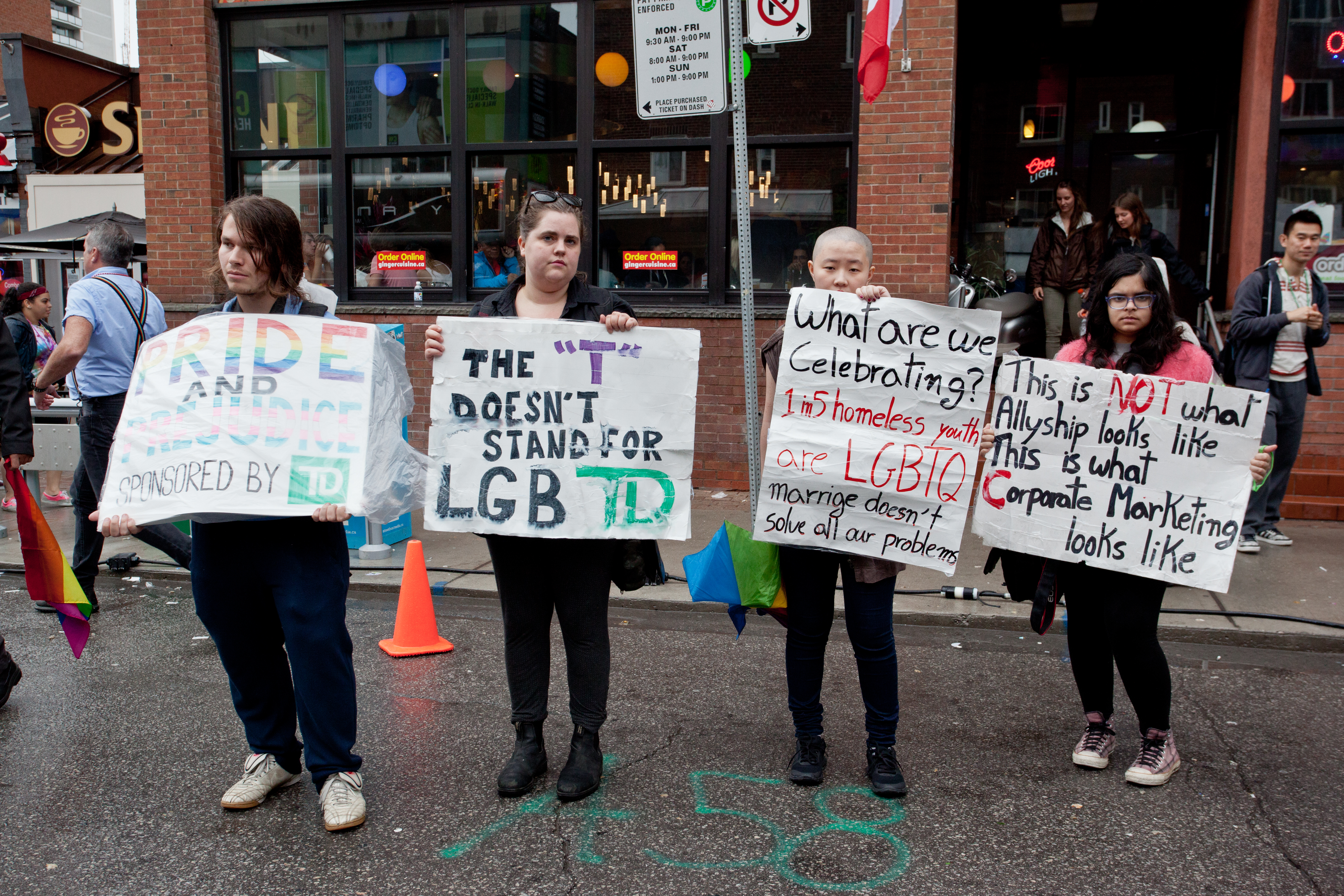
People stand in Toronto’s gay Village with anti-corporate sponsorship signs during Pride 2015. Credit: Nick Lachance/Xtra
“Commercialization produces a set of deeper problems and issues for how queer people of colour, Black queers, and Indigenous queers think about what it means to be a part of queer community,” adds Rinaldo Walcott, director of the Women and Gender Studies Institute at University of Toronto and author of Queer Returns: Essays On Multiculturalism, Diaspora and Black Studies.
When the idea of Pride becomes so entwined with consuming, it leaves little room for members of our community who live close to the poverty line, he says. “It continues to frame a deep and profound outsiderness.”
But Pride organizations across Canada say they need both corporate and government money if they are to continue to grow and offer large-scale events and feature big names.
In an attempt to balance their perceived need for corporate sponsorship with community concerns, some Pride organizations have now begun to vet their sponsors. But can a balance be struck?
Vancouver, BC
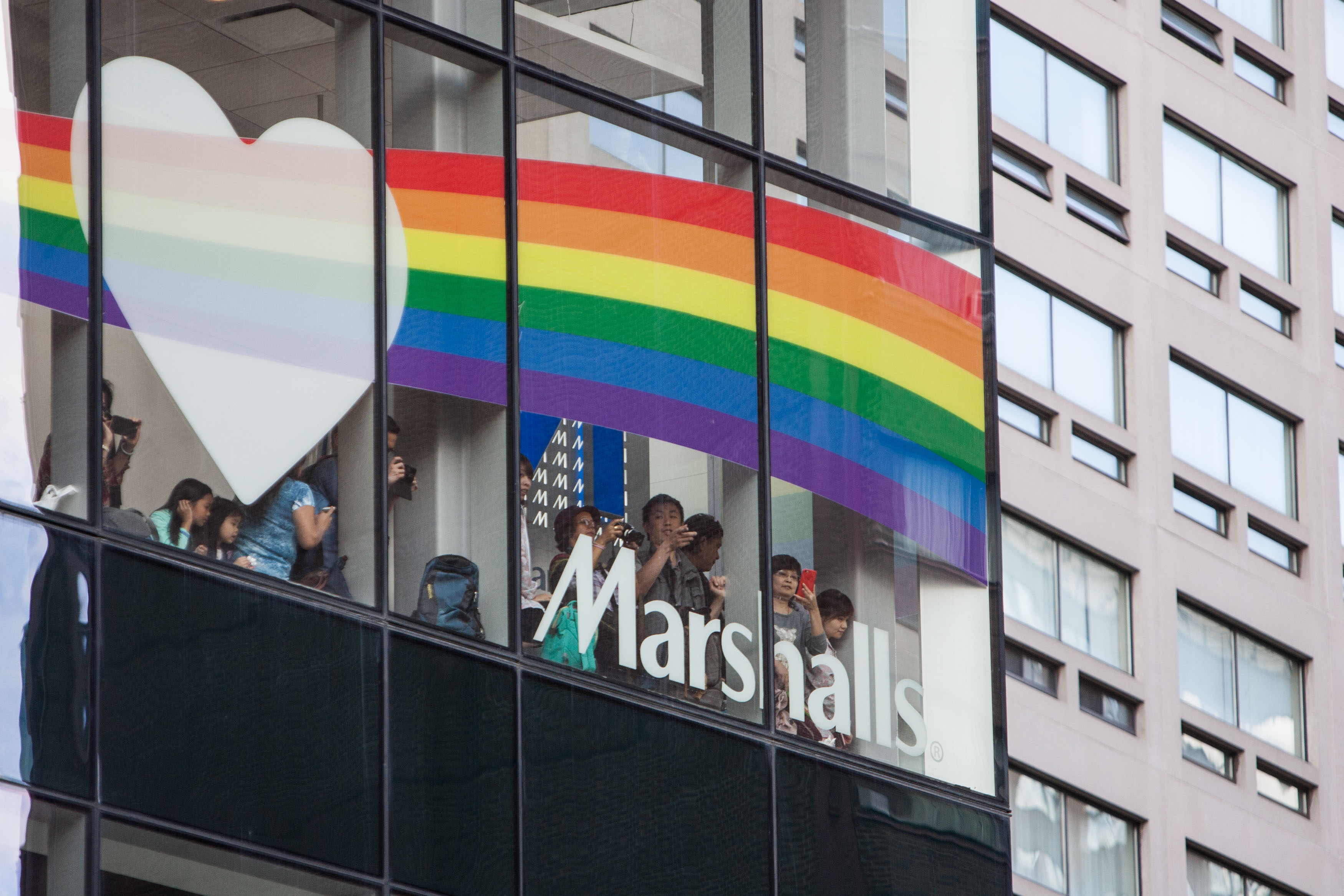
One of Vancouver’s corporate sponsors include TJX Canada, which owns Winners, Marshalls and Homesense. Credit: Nick Lachance/Xtra
In May 2017, the Vancouver Pride Society (VPS) released the results of its 2016–2017 community consultation. The results show that some of the 320 participants welcome support from businesses, while others say the corporate presence overshadows the community and they want to see less of it. Others want corporations eliminated altogether from the parade. Some community members urged Pride to better vet its sponsors.
Vancouver’s corporate sponsors include TD, Microsoft, BMW, TJX Canada (which owns Winners, Marshalls and Homesense), Bud Light, Stoli, Trojan, Starbucks (its Pride Alliance Network) and Walmart.
According to Kieran Burgess, the organization’s former executive director of operations, who resigned after this year’s festival to return to his home in Australia, the Vancouver Pride Society has been working to “revamp how we approach sponsorship and partnerships and parade entries.”
In 2015, the VPS required all groups marching in the parade to sign a mandatory pledge supporting the addition of trans protection to human rights legislation. In March 2017, the VPS implemented a matrix to screen new sponsors.
“We want to make sure that people that are investing in us aren’t just pinkwashing or buying corporate social responsibility,” Burgess told Xtra in an interview in June.
“Their intent must be to fully support the community,” he said, “and we must make sure that their values align with ours.”
The matrix, scored by a parade working group of five to eight volunteers plus Pride’s co-executive director, assesses each sponsor and parade applicant’s policies, values and support for the LGBT community. It’s also intended to encourage sponsors to do better and “serve the community in the best way that they can,” Burgess said.
Some of the questions include whether the group has been previously involved in Pride, if it has policies that “promote diversity based on sexual orientation, gender identity and expression,” if it has a record of homophobia or transphobia, or if it sells products that harm the community.
An applicant’s score can lead to automatic rejection, board review, or approval.
As the VPS vetted potential sponsors, it also raised funds to help “marginalized or vulnerable groups” participate in Pride (or hold their own events), and reserved the last 20 parade spots for community groups — even if that meant putting corporations on a waitlist as the parade filled up.
In 2017, Pride also asked corporate entries, media and the City of Vancouver to reduce the number of vehicles they entered in the parade, and asked police to limit the number of uniformed officers.
Halifax, NS
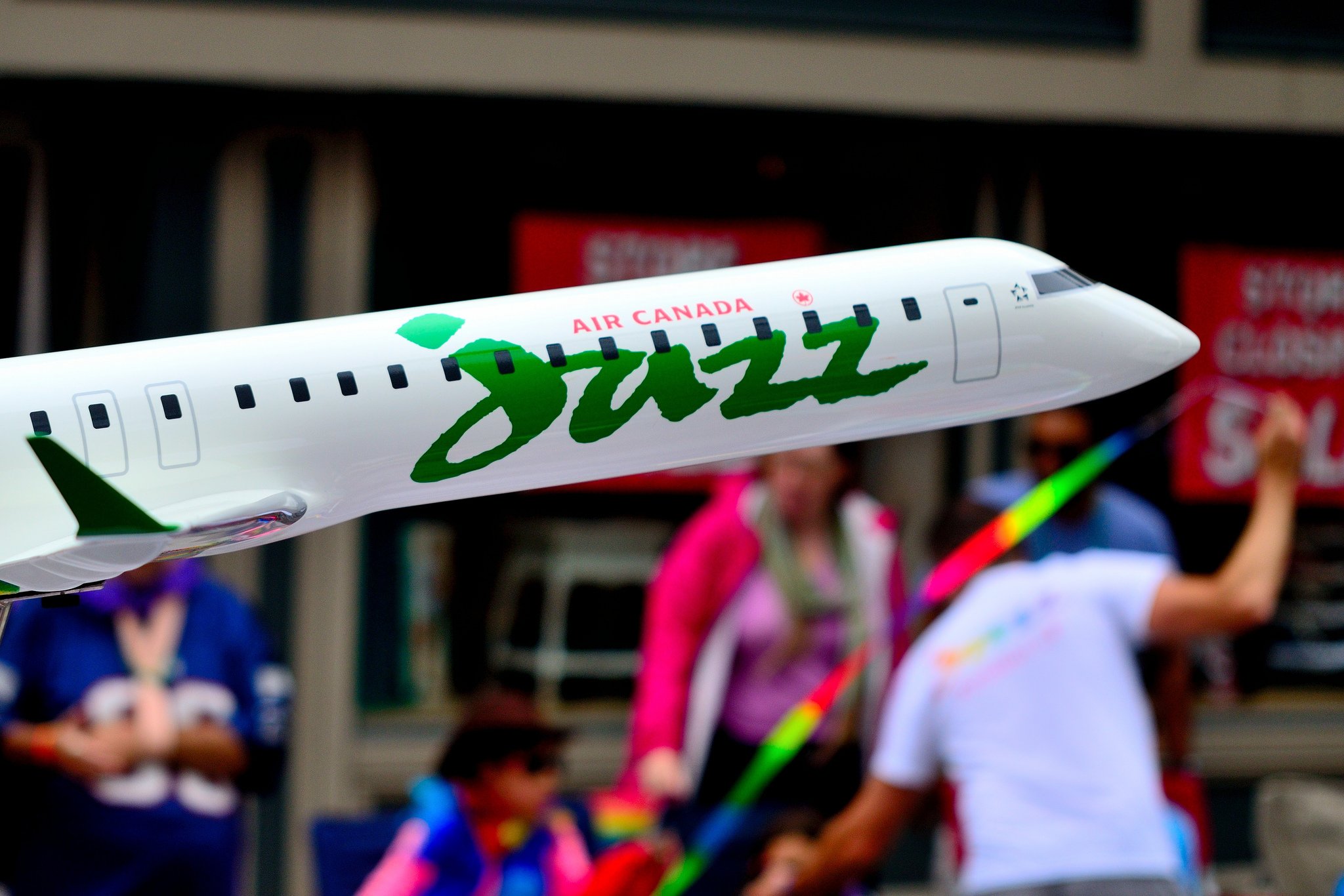
Jazz Aviation is a sponsor of Halifax Pride, pictured at the parade in 2013. Credit: Paul B/Flickr Creative Commons
Three years of community pushback against a sponsored campaign at Halifax Pride’s community fair to promote Israel to the LGBT community culminated in an acrimonious Pride annual general meeting in October 2016. Halifax Pride apologized four months later and acknowledged the meeting was “full of racism, misogyny and hate.”
In its wake, Pride hired its first executive director, former sponsorship coordinator Adam Reid, who promptly introduced a survey for potential Pride sponsors.
Released in April 2017, the survey pilot project is meant to “both educate our festival-goers about the work being done by the organizations we partner with and offer [sponsors] an opportunity to be self-reflective,” Reid says.
Survey questions focus on potential sponsors’ workplace initiatives, LGBT-inclusive health benefits, queer– and trans–related staff training, gender neutral washrooms, support for people transitioning, as well as public expressions of support for the community.
There is however, no language in the survey saying that groups must meet a certain threshold in order to become or remain a sponsor, Reid says. “We don’t want to turn away folks who are trying to do better.”
Rebecca Stuckey, outreach and education coordinator for the sexual and gender resource centre South House, calls the survey “surface-level.”
“Where’s the analysis around the other work that [these corporations are] doing and how that’s harmful for queer and trans communities?” she asks.
Stuckey would like Halifax Pride to stop accepting money from corporations and groups that use gay support to bolster their image. South House boycotted Halifax Pride this year, in part, it said, because of Pride’s handling of the previous years’ complaints and its failure to acknowledge the pinkwashing within its events.
Calgary, AB and Regina, SK
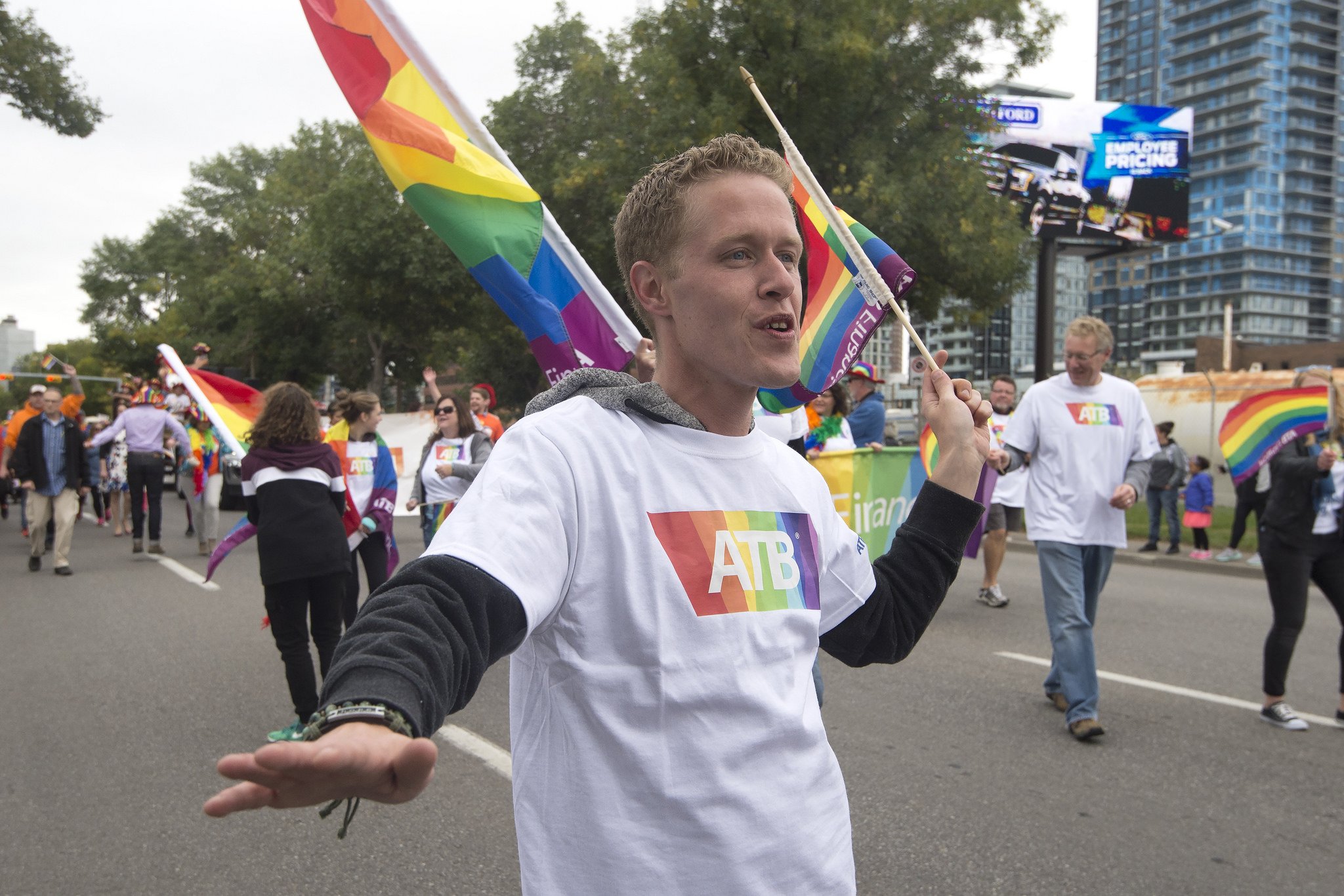
A participant at Calgary Pride 2016 wearing an ATB Financial shirt, one of the parade’s corporate sponsors, on Sept 4, 2016. Credit: Chris Schwarz/Government of Alberta via Flickr Creative Commons
According to its website, Calgary Pride organizers encourage sponsors to “think seriously about their motivation to be involved in this event, and to treat it as more than ‘just another marketing opportunity.’”
“It’s our goal to ensure that we have presented to the community authentic genuine allyship,” says Calgary Pride’s newly-hired executive director Laurissa Chapple. “We want it to be authentic for them as well and true to their corporate culture, but the first step is ensuring our values align.”
Calgary Pride is sponsored by Imperial Oil and Enmax Energy, Aurora Cannabis, and TJX Canada. ATB Financial is the festival’s presenting sponsor.
Organizers also expect the sponsors to reach out to the community. Chapple points to ATB’s public outreach table on a busy downtown street as a recent example. Politicians and political parties who want a contingent in the parade must submit a document describing how they “have advocated for, supported, and represented the community in the past 12 months.”
In the lead-up to the August 2017 festival, Calgary Pride denied the new United Conservative Party’s application to take part in the parade, due to the party’s inability to meet this requirement.
In Regina, Queen City Pride retains the right to cancel a sponsorship agreement if the sponsor expresses discriminatory sentiments or has “practices discriminatory to the LGBTQ community,” says co-chair Dan Shier. Their vetting process is more of an internal discussion, says Shier, adding that the majority of their sponsors are local.
In 2016, Queen City Pride introduced the option for sponsors to pay to be a presenting sponsor of several signature events, Shier adds. RBC now presents the parade.
This year, they added an extra $1,000 funding requirement to be eligible for the presenting level sponsorship package, in addition to the $1,000 to $2,500 it costs to attach a name to a signature event. Presenting sponsors must also have sponsored Pride for two years.
“One thing we’re not prepared to do,” Shier says, “is allow a sponsor to take the presenting title of the festival itself.”
Montreal, QB
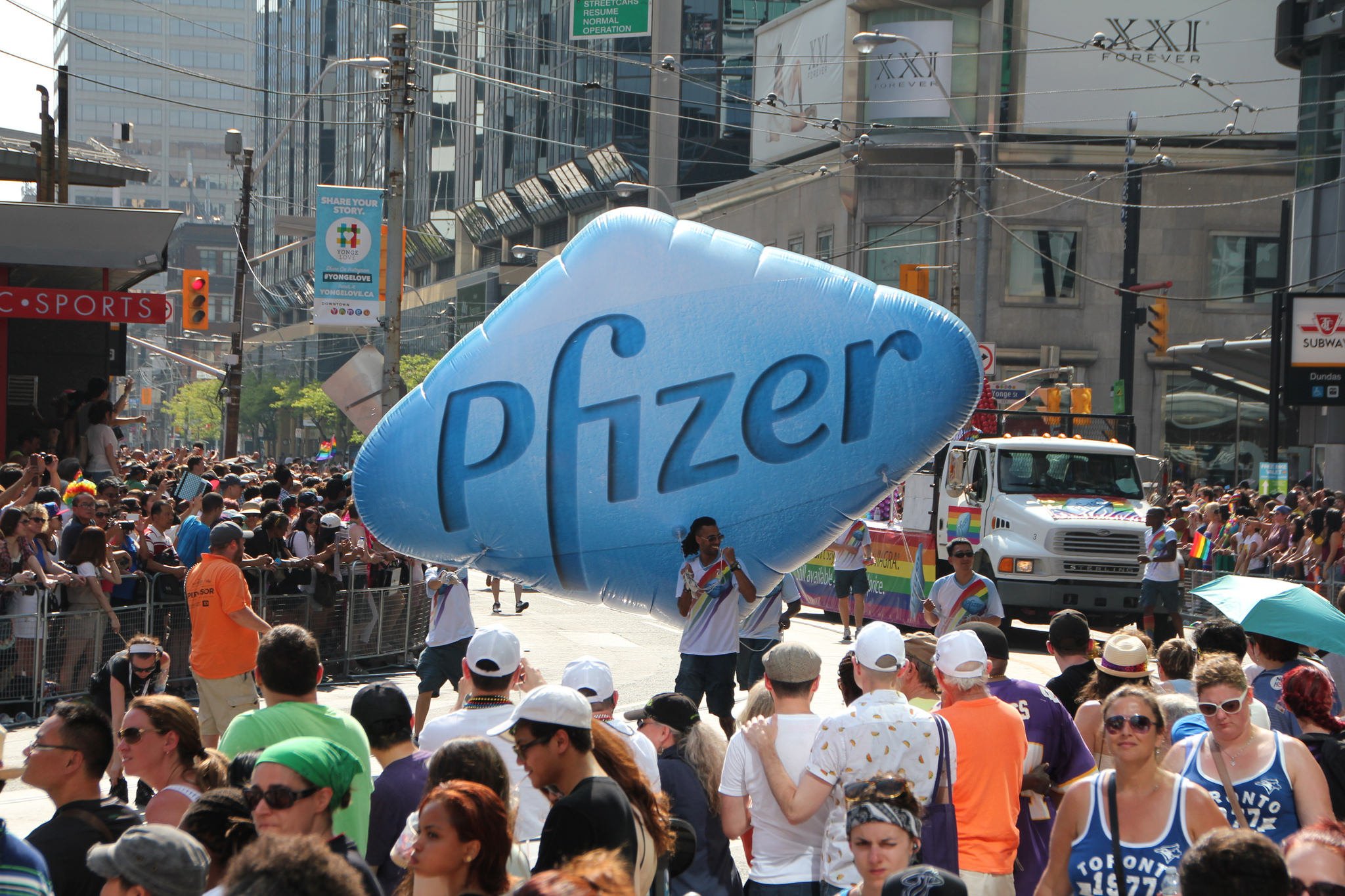
Fierté Montreal has been presented by Pfizer’s Viagra since 2011 (pictured at WorldPride 2014 in Toronto). Credit: Can Pac Swire/Flickr Creative Commons
Fierté Montreal does not have specific criteria for sponsors but relies on in-house research to see if “they have done anything for or against the LGBTQ community,” says vice-president Jean-Sébastien Boudreault.
It is important, he says, that sponsors are “not only giving money to look good,” but to support the community all year. Organizers meet with each sponsor twice annually.
Boudreault says Fierté Montréal turned down some potential sponsors this year because they didn’t align with Pride’s core values or demonstrate that they were “good for” the LGBT community.
But he emphasizes the importance of corporate sponsorship. “Pride would not be Pride, with all of the free shows and activities, without the help and support of our partners,” he stresses.
Fierté Montréal, which this year featured 250 activities over 11 days, takes place in a city of festivals, Boudreault points out, and has to compete with the likes of Just for Laughs and the Festival International de Jazz de Montréal. “We want to be one of the biggest LGBTQ festivals in the world” — and that requires funding, he says.
Still, the 2017 Pride festival featured sponsor-free zones and free parade entries for groups with a budget under $100,000, with additional bursaries to cover materials.
TD has been the presenting sponsor of the festival overall since 2010, and the parade has been presented by Pfizer’s Viagra since 2011. Boudreault says Fierté Montréal allows sponsors to present the festival, parade, and Community Day in order to expand Pride’s budget (which he describes as limited), to ensure they are not completely reliant on government funds, and to keep events free.
Fierté Montréal does not publicly disclose how much individual sponsors, such as TD and Pfizer, contribute.
Toronto, ON
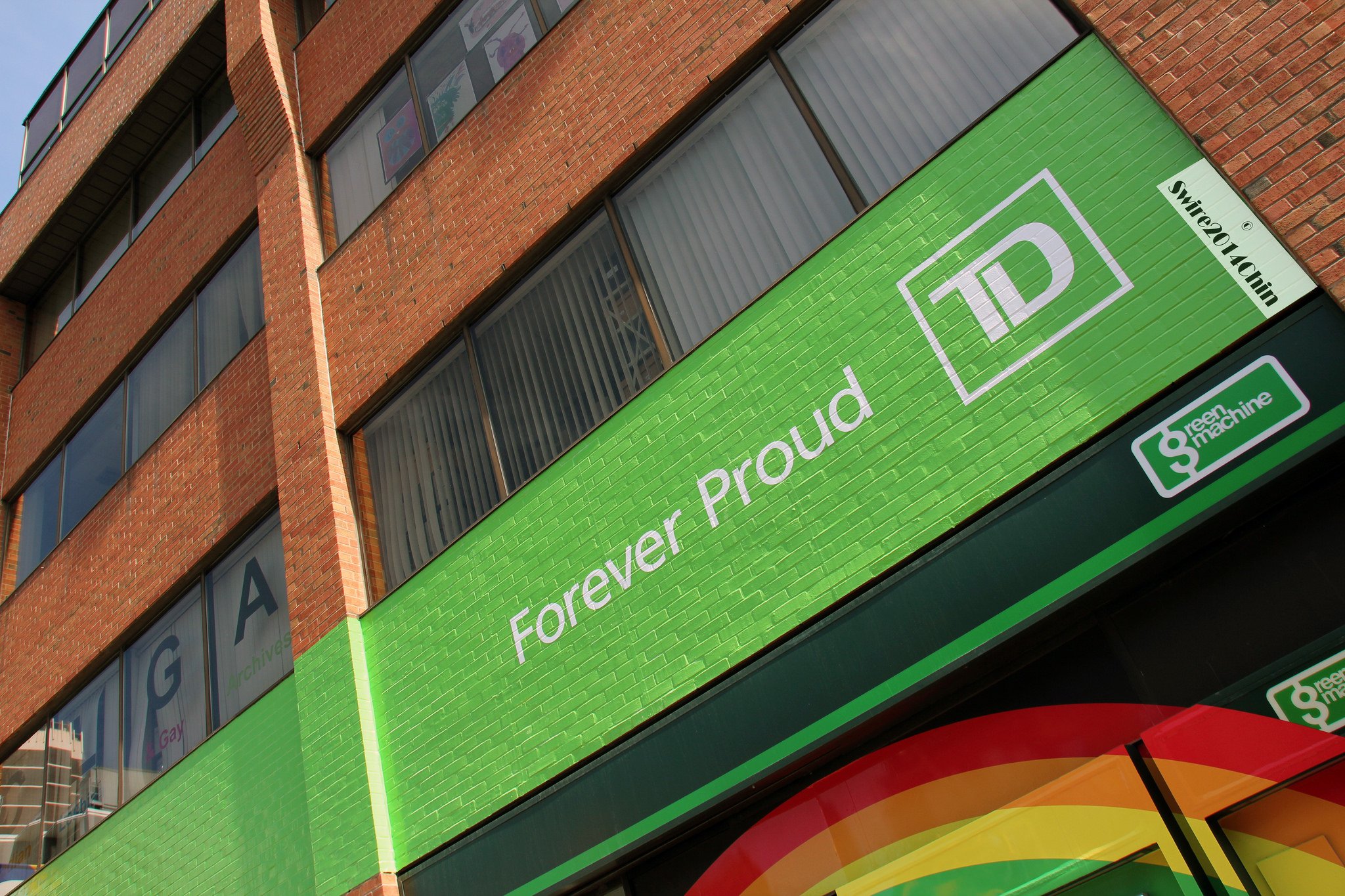
TD bank decorates its Church-Wellesley Village branch for Toronto Pride. TD sponsors 63 Pride parades across North America. Credit: Can Pac Swire/Flickr Creative Commons
Toronto Pride is one of 63 Pride festivals across North America that TD bank sponsors.
In 2010, Pride Toronto was a year into the fierce debate around the participation and subsequent attempts to censor Queers Against Israeli Apartheid (QuAIA) when TD entered the fray.
In a letter dated March 30, 2010, then-TD vice-president Scott Mullin wrote that while TD supports Pride Toronto, it had become harder to do so after Pride reversed its (short-lived and controversial) decision to screen all parade signs, a policy implemented in response to criticism over QuAIA’s 2009 contingent and its signs challenging Israeli policy towards Palestinians.
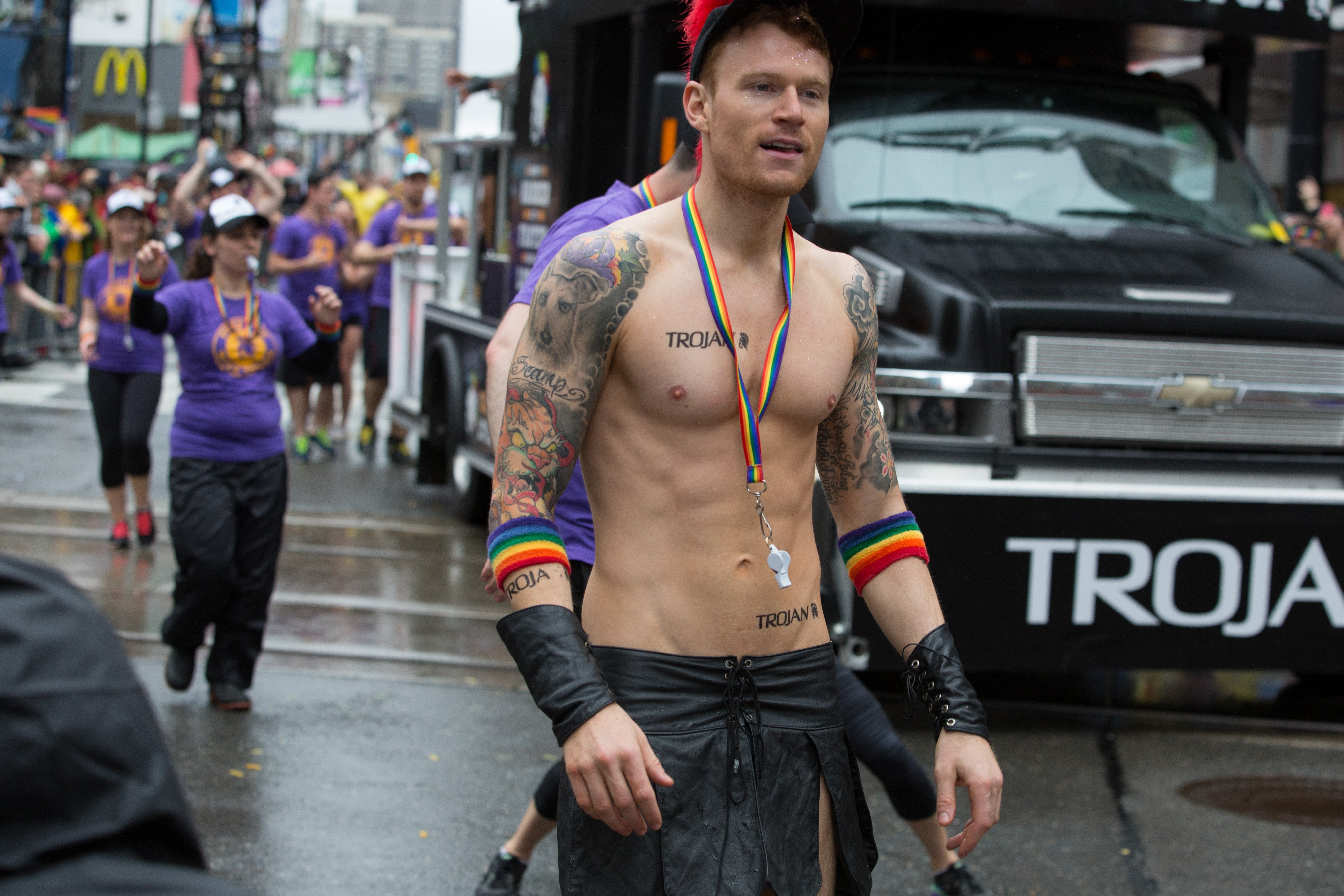
Pride Toronto drew criticism during WorldPride 2014 after signing an exclusivity agreement with Trojan, which prevented groups from handing out any non-Trojan condoms at the parade or street fair. Credit: Kyle Burton/Xtra
Mullin’s letter heightened community concerns about corporate influence over Pride decision-making, and in February 2011, Toronto Pride’s Community Advisory Panel recommended that Pride decrease its reliance on government and corporate sponsorship.
In 2014 during WorldPride, Pride Toronto drew more community criticism when it signed an exclusivity agreement with Trojan, preventing groups from handing out any non-Trojan condoms at the parade or street fair. HIV activists said the deal interfered with their efforts to support safer sex.
Seven years earlier, according to McCaskell’s book Queer Progress, Pride had also bumped Blockorama, organized by the queer and trans Black group Blackness Yes!, from its prime location in favour of a TD-sponsored stage and beer garden.
In 2016, Pride Toronto brought over $2.2 million in sponsorship.
Its website lists just over 20 official sponsors — including TD, Mercedes Benz, Bud Light, the Ontario Lottery and Gaming Corporation, Stoli, Viagra, TJX Canada, Loblaws, Manulife and Crest. At least 20 percent of the approximately 140 contingents in the 2017 parade were corporations, including the Bank of Nova Scotia, CIBC, RBC, TD and Capital One credit card, tech giants Microsoft, Google, Facebook, and Linkedin, Pfizer, and Procter and Gamble. The Canadian Armed Forces also marched, but Pride banned uniformed police from marching in Pride 2017.
Pride Toronto does not have a formalized process for vetting sponsors. But sponsorship contracts include a clause requiring they “operate in a manner consistent with the celebration of Pride and positive value of diversity in the LGBTTIQQ2SA communities,” Pride Toronto told Xtra in a June 29, 2017 email.
Sponsors are also required to have both non-discrimination and equal opportunity policies, and are not permitted to “promote or condone . . . violence, hatred, degradation or negative stereotypes.”
Sponsors must also commit to respecting “the right of all members and supporters of the LGBTTIQQ2S communities to participate in Pride Month 2017.”
Does Pride even need corporate sponsorship?
“I don’t think there’s any going back to a Pride that is not commercial,” says Rinaldo Walcott from the University of Toronto’s gender studies institute.
“Toronto Pride now represents too much the financial interest of retail capitalism, and the hotel and hospitality industry, for it to return to a non-commercial entity,” he says.
Pride chose its path when it promoted itself to the City of Toronto as a diverse festival worth funding in the late 1990s, he says, when it angled to scoop up some of the support given to the Caribbean festival Caribana (now the Toronto Caribbean Carnival).
By 2016, Pride was injecting $600 million into Toronto’s economy, according to co-chair Aaron GlynWilliams.
“You can’t have a party without balloons, and somebody’s got to pay for the balloons,” says McCaskell.
“But I think that we could do a lot better job of making sure that corporate support is serving our interests,” he says, “rather than serving theirs.”
When Pride organizers vet sponsors, who does the vetting makes a difference, says Fatima Jaffer from Trikone in Vancouver.
If it’s a Pride board setting the sponsorship standards and vetting the applicants, that board must truly represent all aspects of our community, especially marginalized members, she says, but notes that Pride boards often aren’t made up of the most progressive community voices.
Whether they’re vetting a sponsor’s local, national or international record can also make a difference, Walcott points out. A sponsor like TD bank can seem very progressive and even diverse on a local level, for example, but Walcott questions where the bank makes and invests its profits, and who is impacted.
And then there’s the deeper question that big Pride festivals should ask themselves. “They almost never address the question that getting bigger and bigger is not necessarily getting better,” Walcott says. “Why does it need to be bigger?”
“Bigger in service of who and for what? What has Pride becoming bigger and bigger actually produced for queer people in their everyday lives when the festival is over?”
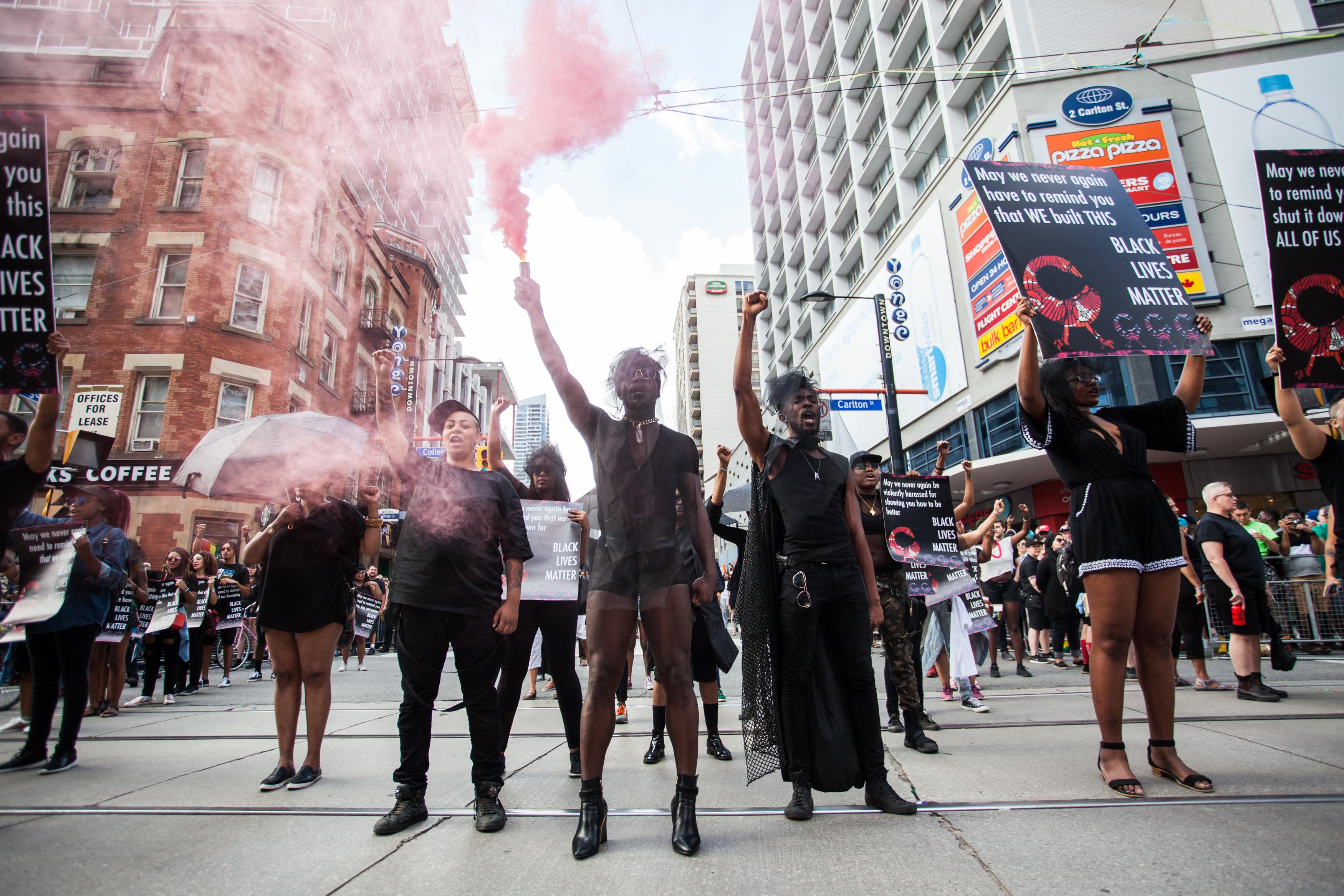
Black Lives Matter Toronto marches in Pride on June 25, 2017. Credit: Nick Lachance/Xtra
In the early years of Pride, McCaskell remembers scanning the papers for articles, and thinking, ‘yes, we’re finally having an impact’ as the coverage grew. But if Pride is serving the community’s purposes then it doesn’t need to keep growing now, he says.
“Even a smaller festival that focused on community building would still have a profile in the city as a whole,” he says.
Instead of focusing on shrinking Pride Toronto’s already large corporate footprint, McCaskell thinks it’s likely more useful to expand Pride’s progressive footprint. He says there are plenty of pre-existing community groups who could inject progressive politics into Pride, such as Black Lives Matter Toronto’s contingent in the 2016 parade which held a sit-in in 2016.
McCaskell suggests that some sponsors could even be harnessed to help more community groups participate in Pride by funding their parade contingents. This could reduce the corporate presence, increase the visibility of more marginalized community groups, and paint a more accurate picture of who is part of our communities, he says.
In theory, Jaffer says she’s 100 percent for the full withdrawal of corporate funding from Prides, but she acknowledges that in practical terms that would mean “going back to the drawing board”of figuring out what Pride should look like.
“I do think that as we’re doing that work — of trying not to be quite so complicit in that corporate agenda, and not be used by them quite as much — along the way, we start to change our imagination of what Pride means,” she says.
For Jaffer, the 2017 March on Pride organized by Black Lives Matter Vancouver to centre the voices of queer people of colour and reclaim community space in the gay village, is what Pride should be: smaller, more politicized, and less commercialized.
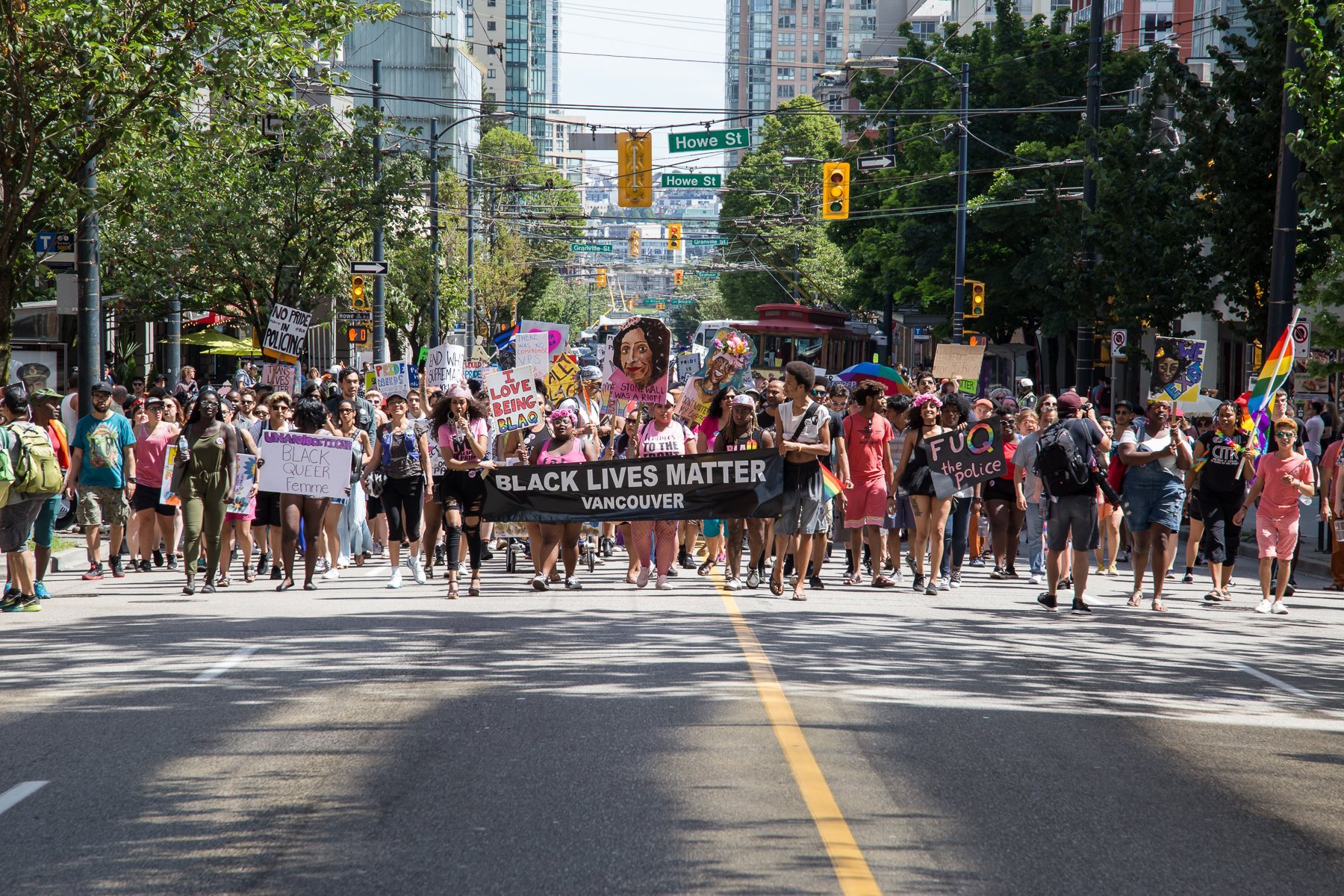
March on Pride was organized by Black Lives Matter Vancouver and took place June 25, 2017. Credit: Janet Rerecich/Xtra
Alternative events like these need to keep creating space while mainstream Pride festivities consider their future path, she says. “I think to change society you have to take people with you. And the more people that participate and see what a non-commercialized and truly inclusive Pride parade can be, the more they will want to change the main one.”
As mainstream Prides consider what changes to make, they need to actively include, and centre, community members who have not yet fully benefited from recently won LGBT rights, Walcott says.
“Those who are outside of all of the forms of respectability that queers can now inhabit, their vision of what it means to be queer, their sense of what it means to be queer has been drowned out by the celebratory moment of ‘we’ve now all got our rights and everything is fine,’” he says.
“So I think a radical Pride would not be turning to those of us that think we’ve got our rights and everything is fine — it would be turning to the people who continue to say that there is much to do,” he says.
“My radical vision would be that we would have a Pride where the people who are seen to be the most marginalized are front and centre,” he continues.
“That they’re the ones that are articulating what our themes are going to be, they’re the ones articulating who we’re going to honour, they’re the ones who are giving us the sense of what it means to be queer now.”
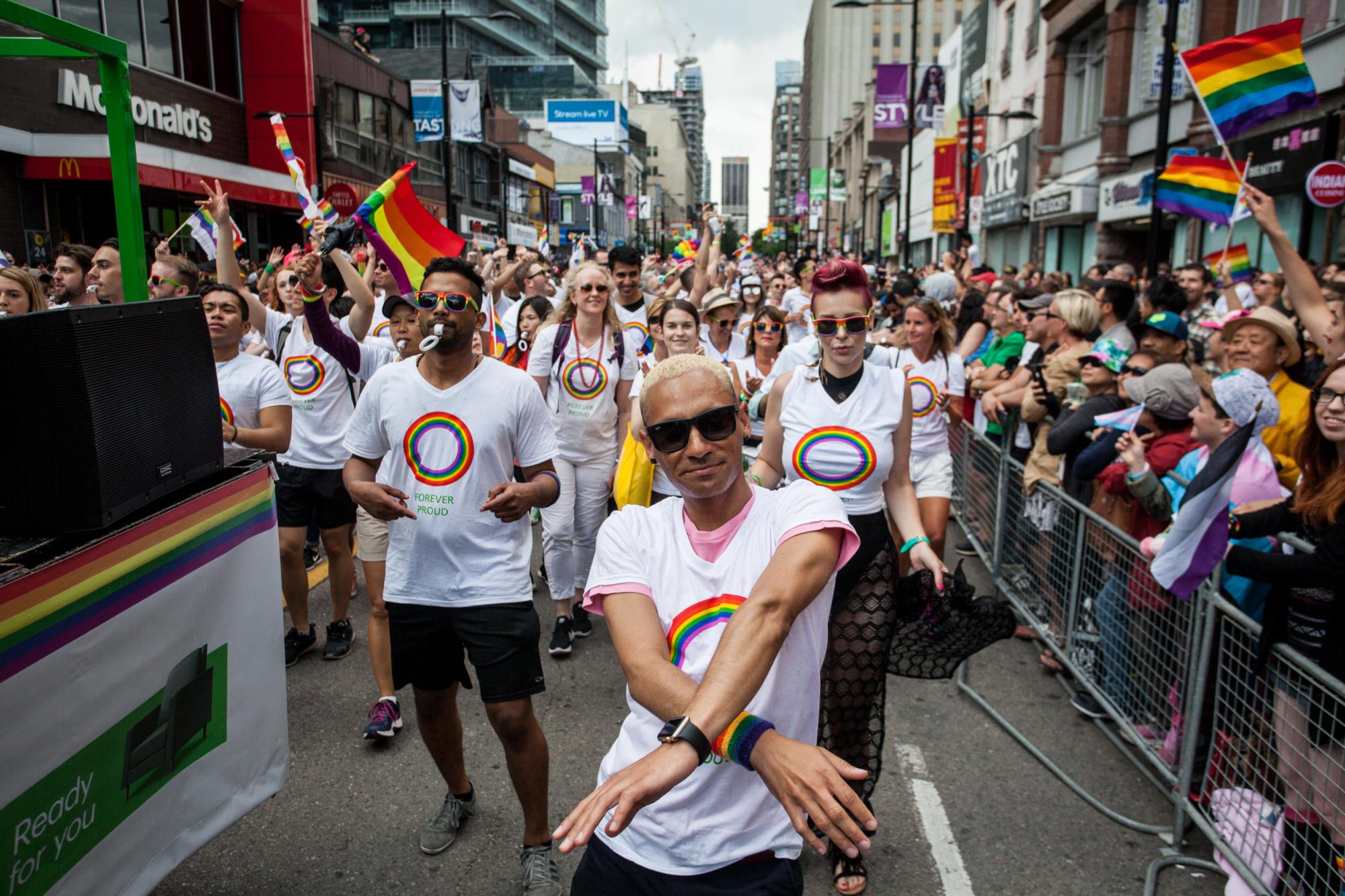
 Why you can trust Xtra
Why you can trust Xtra


